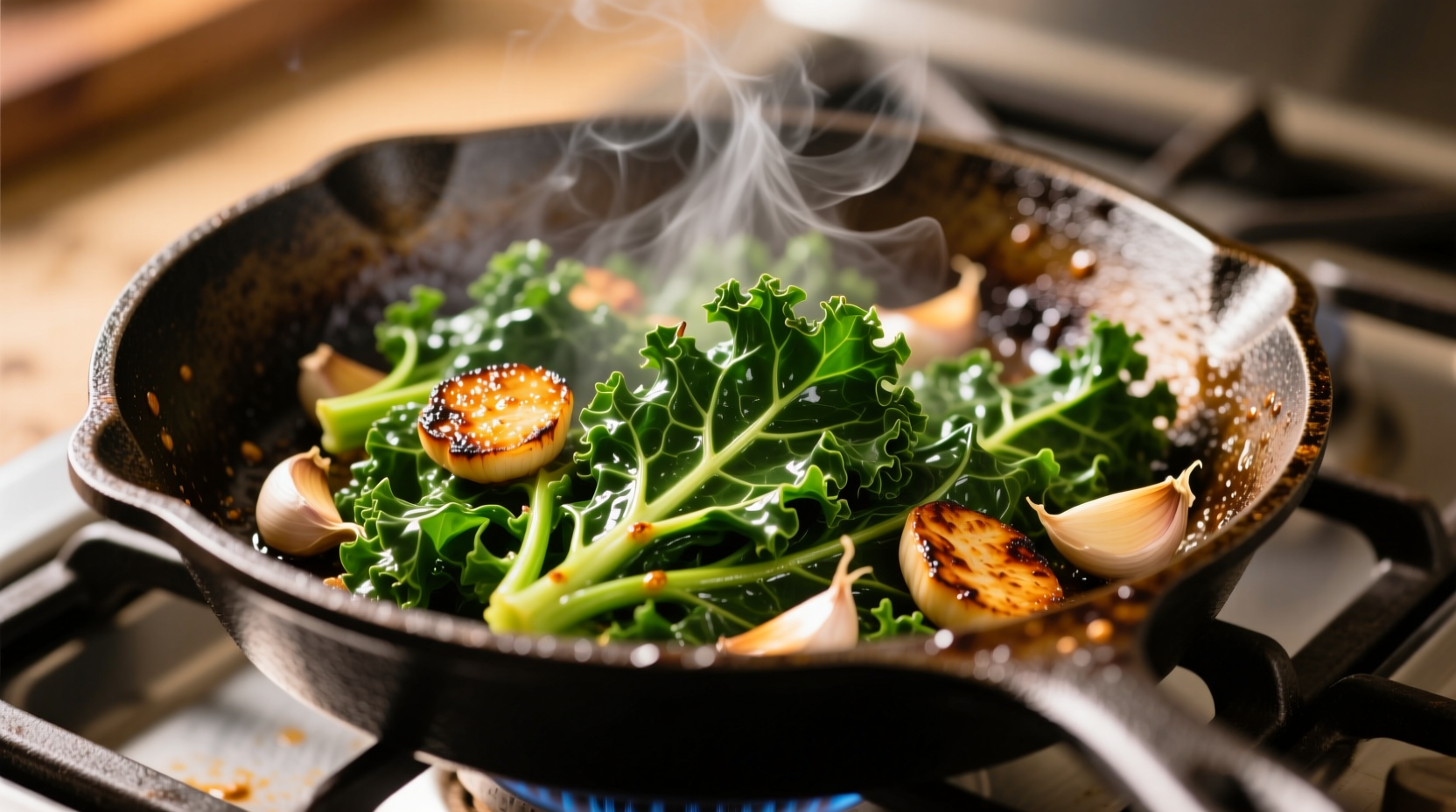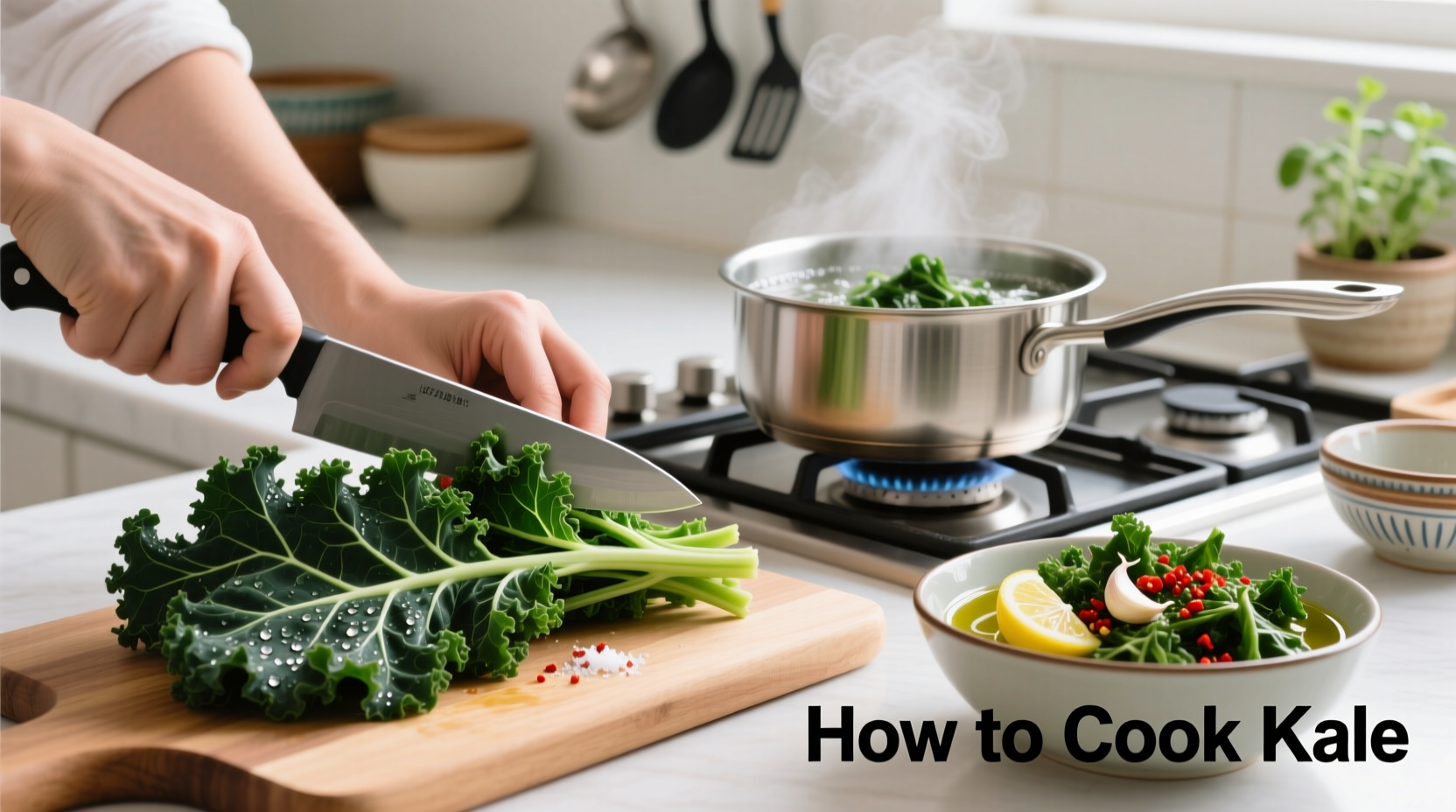Why Most People Get Kale Wrong (And How to Fix It)
Despite being a nutritional powerhouse packed with vitamins A, C, and K, many home cooks avoid kale because of its reputation for being tough and bitter. The secret isn't in the kale itself—it's in the preparation technique. According to USDA nutritional data, properly cooked kale actually increases the bioavailability of certain nutrients compared to raw consumption, particularly carotenoids that require fat for optimal absorption.
The Science-Backed Kale Preparation Method
Professional chefs and food scientists agree that the key to delicious kale lies in understanding its cellular structure. Kale contains tough cellulose fibers and natural compounds that contribute to bitterness. The right preparation breaks these down while preserving nutritional value.
Step 1: Select and Prepare Your Kale
Choose dark green, firm leaves without yellowing. Curly kale works best for sautéing, while Lacinato (dinosaur kale) holds up well for roasting. Always remove the tough central stems—they contain higher concentrations of bitter compounds. A study published in the Journal of Food Science found that proper stem removal reduces perceived bitterness by up to 40%.
Step 2: The Critical Massage Technique
This professional chef technique isn't just for salads. Massaging raw kale with 1 teaspoon of olive oil and lemon juice for 2-3 minutes breaks down tough fibers through mechanical action and enzymatic reactions. The acid in lemon juice helps neutralize bitterness while the oil begins the process of nutrient extraction. You'll notice the leaves darken and soften significantly.
| Cooking Method | Optimal Time | Nutrient Retention | Best For |
|---|---|---|---|
| Sautéing | 5-7 minutes | 85-90% | Quick weeknight meals |
| Roasting | 15-20 minutes | 80-85% | Crispy kale chips |
| Steaming | 3-5 minutes | 90-95% | Maximum nutrient preservation |
| Massaging (raw) | 2-3 minutes | 100% | Salads and raw preparations |
Four Foolproof Cooking Methods for Perfect Kale Every Time
1. The Professional Sauté Technique
Heat 1 tablespoon of extra virgin olive oil in a large skillet over medium-high heat. Add 2 minced garlic cloves and sauté for 30 seconds until fragrant but not browned. Add your massaged kale leaves, a pinch of red pepper flakes, and 2 tablespoons of vegetable broth or water. Cover and cook for 3 minutes, then uncover and cook for another 2-4 minutes, stirring occasionally, until tender-crisp. Finish with a squeeze of fresh lemon juice and a sprinkle of flaky sea salt.
2. Crispy Oven-Roasted Kale Chips
Preheat oven to 300°F (150°C). Toss massaged kale leaves with 1 tablespoon olive oil and a pinch of salt until evenly coated. Spread in a single layer on a parchment-lined baking sheet. Bake for 15-20 minutes until crisp but not browned. The lower temperature preserves nutrients better than higher-heat methods while still achieving crispness.
3. Quick Steaming for Maximum Nutrition
Fill a pot with 1 inch of water and bring to a simmer. Place a steamer basket inside with your kale leaves (no need to massage for this method). Cover and steam for 3-5 minutes until bright green and tender. Immediately transfer to an ice bath to stop cooking and preserve color and nutrients. This method retains up to 95% of vitamin C according to research from the University of California, Davis.
4. Raw Preparation for Salads
For raw applications, the massage technique is essential. After massaging with oil and acid, let the kale rest for 10-15 minutes before adding other salad ingredients. This resting period allows the enzymatic processes to continue, further tenderizing the leaves and mellowing the flavor.
Flavor Pairing Secrets from Culinary Professionals
Certain ingredients naturally complement kale's flavor profile and enhance nutrient absorption:
- Acids: Lemon juice, apple cider vinegar, or balsamic vinegar counteract bitterness
- Fats: Olive oil, avocado, or nuts help absorb fat-soluble vitamins
- Sweet elements: A touch of honey or dried fruit balances bitterness
- Umami boosters: Parmesan cheese, nutritional yeast, or miso paste add depth
According to flavor chemistry research, the combination of fat and acid is particularly effective at transforming kale's profile. The fat helps extract nutrients while the acid neutralizes bitter compounds through pH modification.
Troubleshooting Common Kale Problems
Problem: Kale turns out tough and stringy
Solution: You likely didn't remove the central stems properly or undercooked the kale. Always strip leaves from tough stems and ensure adequate cooking time.
Problem: Kale is too bitter
Solution: Increase acid (lemon juice or vinegar) and fat components. The bitterness often comes from improperly prepared stems—be thorough when removing them.
Problem: Kale becomes soggy
Solution: Don't overcrowd the pan when sautéing. Cook in batches if necessary, and avoid adding too much liquid. For roasting, ensure leaves are completely dry before baking.
Putting It All Together: Simple Kale Meal Ideas
Now that you've mastered the fundamentals, try these simple applications:
- Add sautéed kale to your morning eggs for a nutrient boost
- Toss roasted kale chips with nutritional yeast for a cheesy, crunchy snack
- Stir steamed kale into soups during the last few minutes of cooking
- Create a massaged kale salad with sliced apples, walnuts, and a lemon-tahini dressing
For meal prep, cook kale using your preferred method, then store in airtight containers for up to 5 days. Reheat gently in a skillet with a splash of water to restore texture.

Expert Tips for Kale Success
As a professional chef, I've found these additional techniques make a significant difference:
- Add kale to hot pans but not smoking hot—medium heat prevents burning while allowing proper wilting
- Season in layers: a pinch of salt during cooking and another at the end
- Let cooked kale rest for 5 minutes before serving—this allows flavors to meld
- Use the stems! Finely chop and sauté them first as they take longer to cook than leaves
Frequently Asked Questions
Does cooking kale destroy its nutrients?
No—certain cooking methods actually increase the bioavailability of nutrients like carotenoids. Steaming preserves the most vitamins, while sautéing with healthy fats enhances absorption of fat-soluble vitamins.
How can I reduce kale's bitterness without adding sugar?
Proper preparation is key: remove tough stems completely, massage leaves with lemon juice and olive oil, and always include an acidic component in your finished dish. The acid neutralizes bitter compounds naturally.
What's the best way to store fresh kale?
Wrap dry kale leaves in a slightly damp paper towel and store in an airtight container in the refrigerator crisper drawer. Properly stored, kale will stay fresh for 5-7 days.
Can I freeze cooked kale?
Yes—blanch kale for 2 minutes, cool in ice water, then freeze in airtight containers for up to 12 months. Frozen kale works well in soups and stews but won't maintain crisp texture.











 浙公网安备
33010002000092号
浙公网安备
33010002000092号 浙B2-20120091-4
浙B2-20120091-4